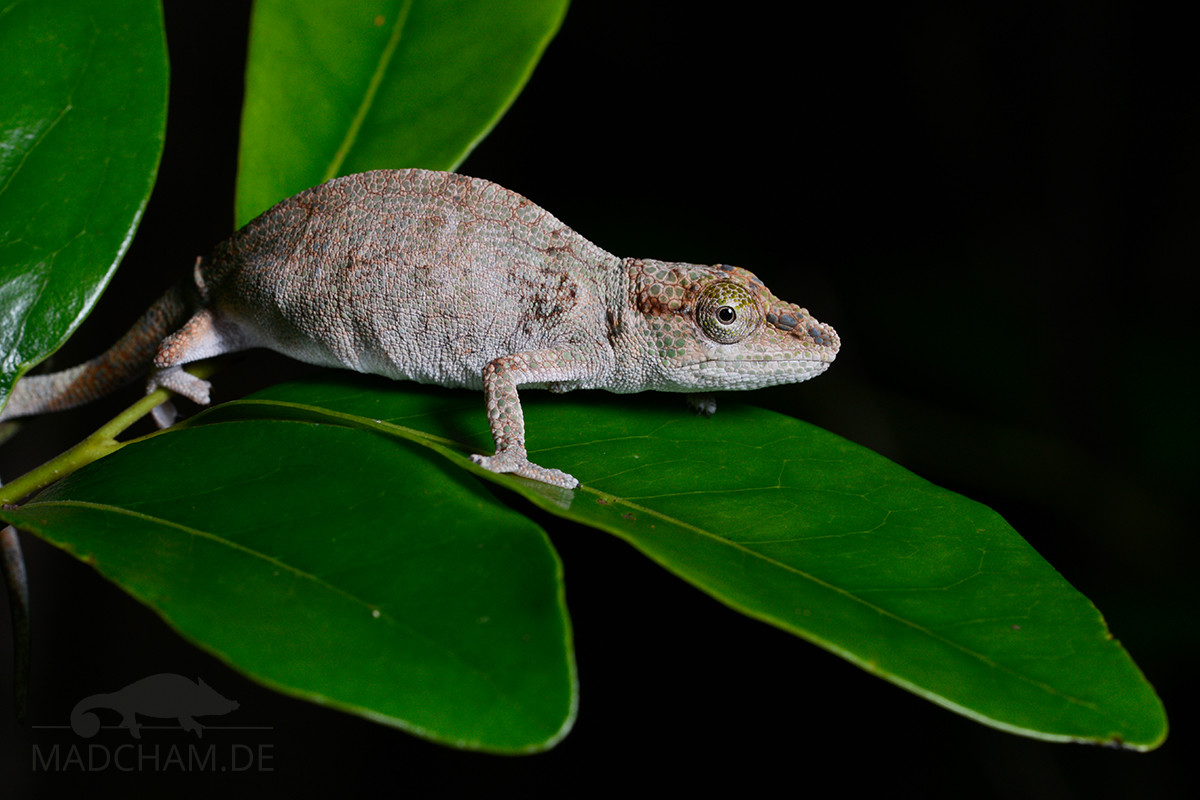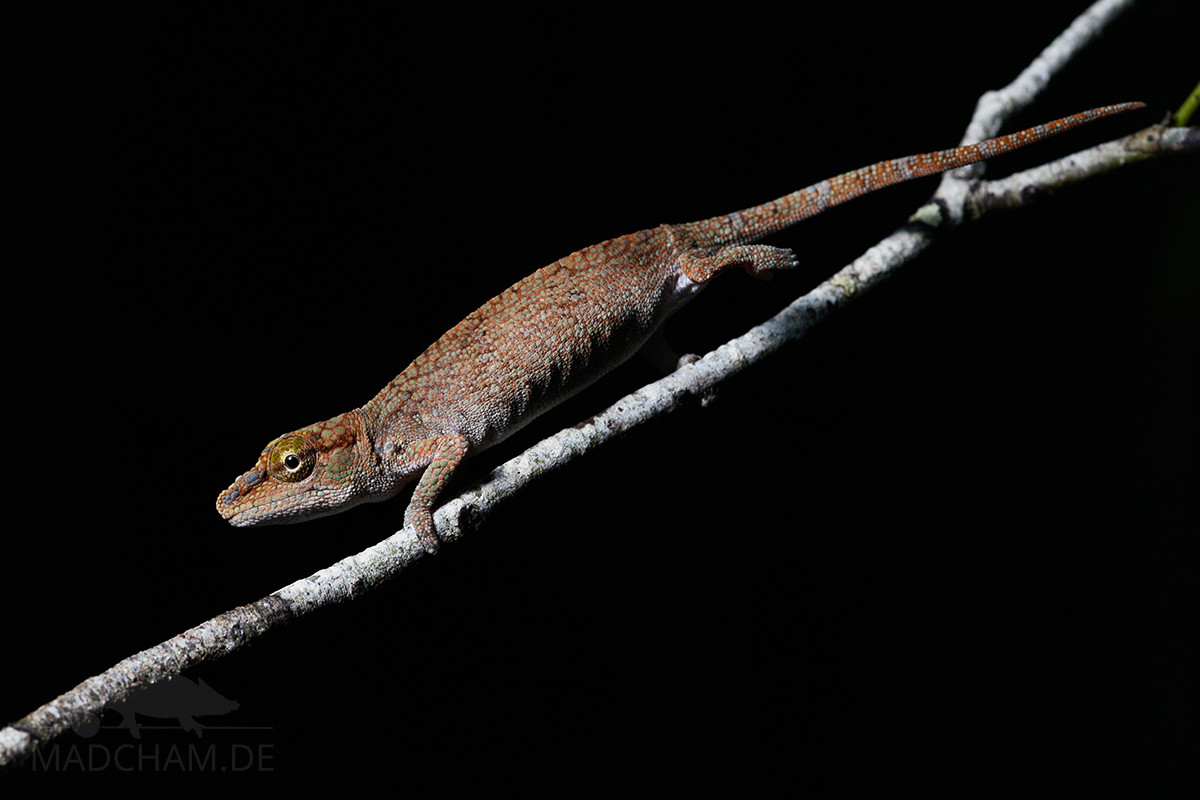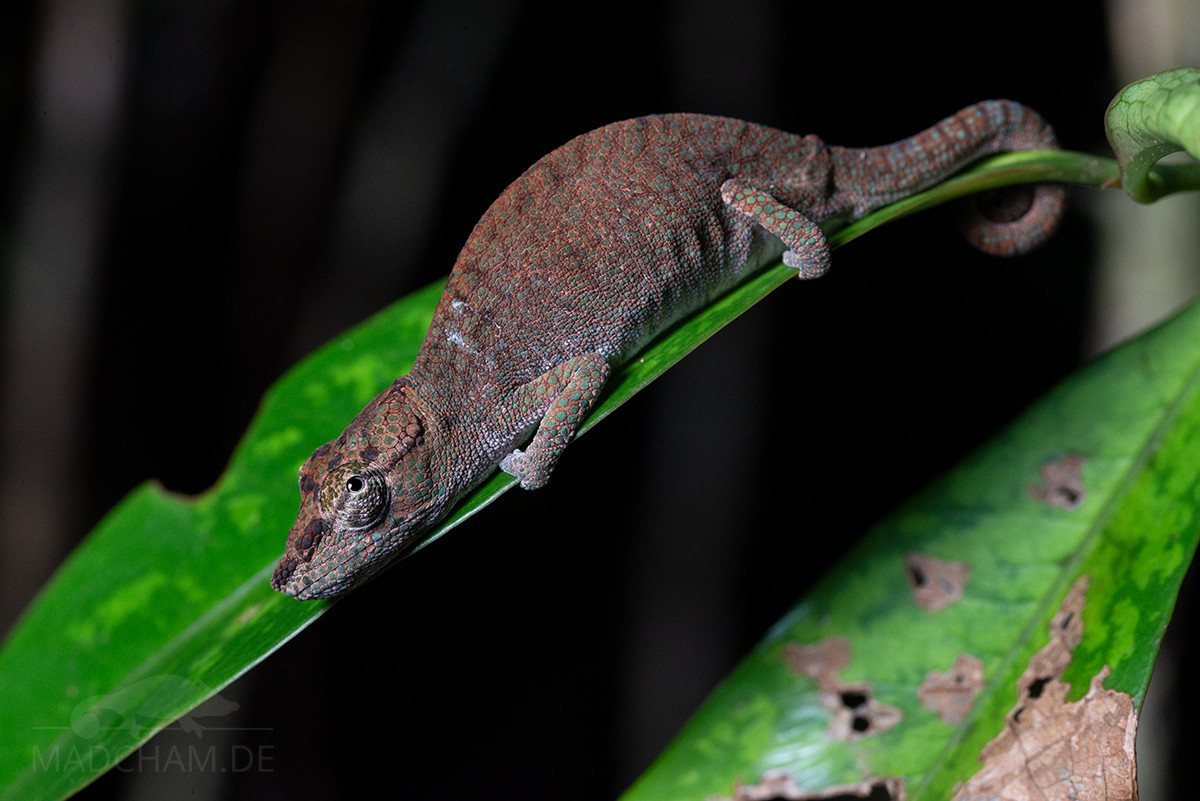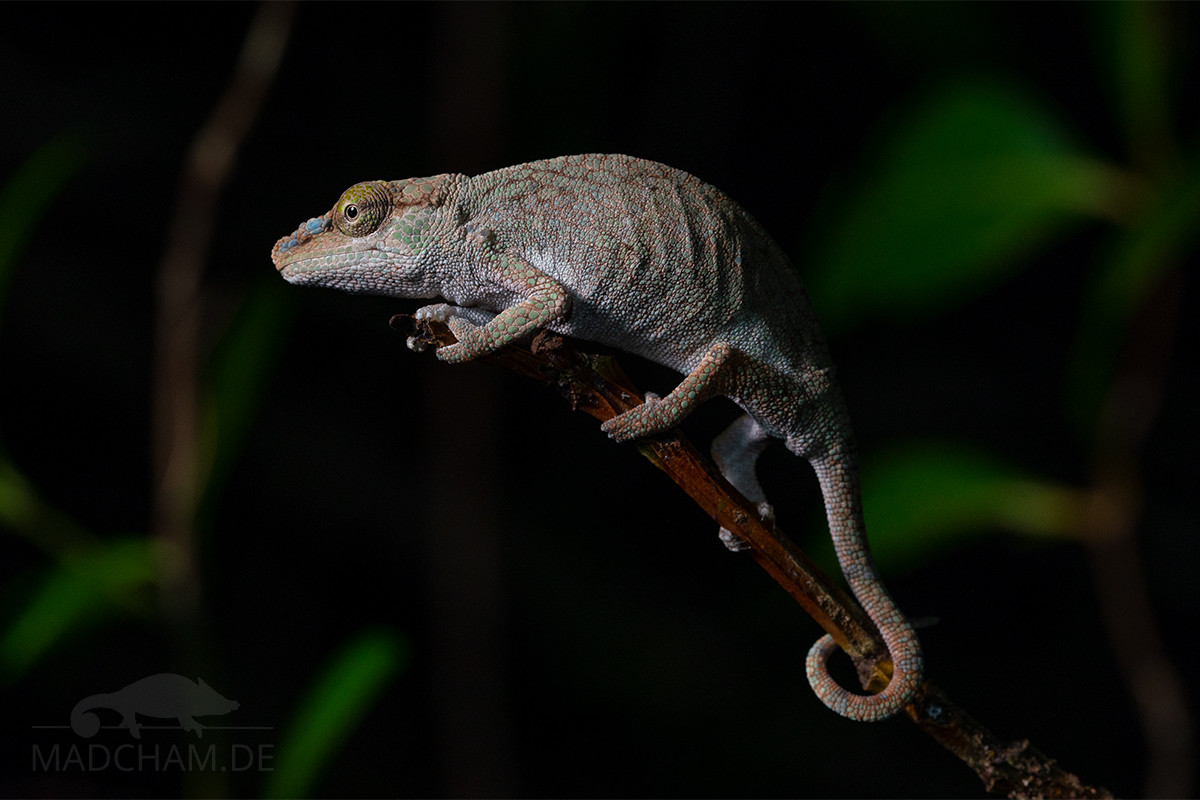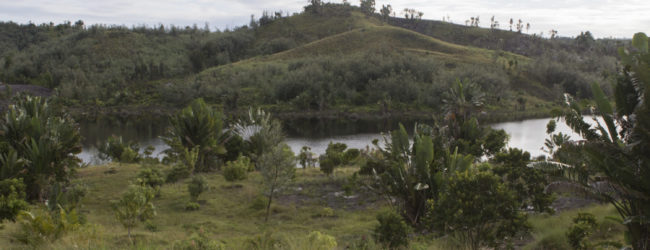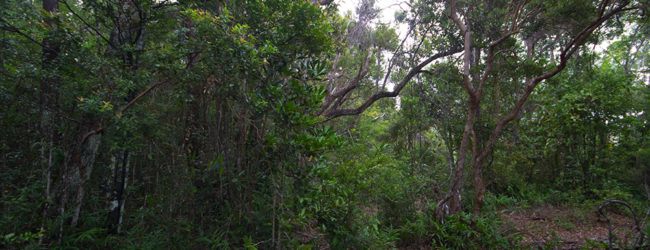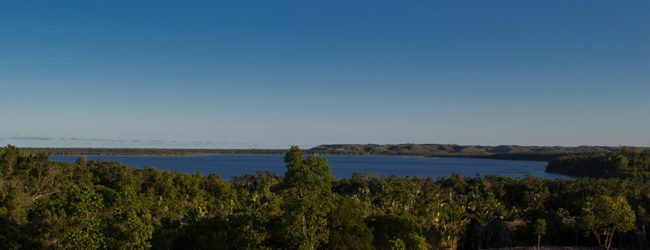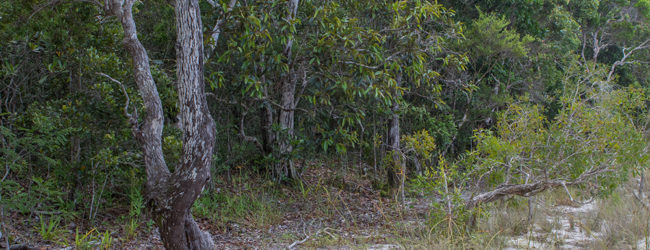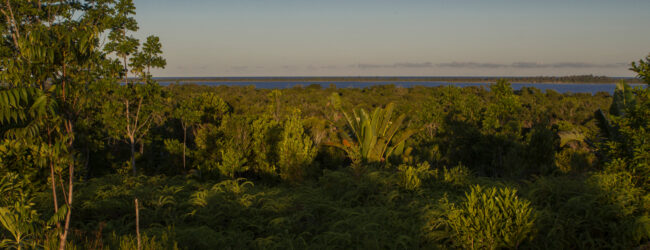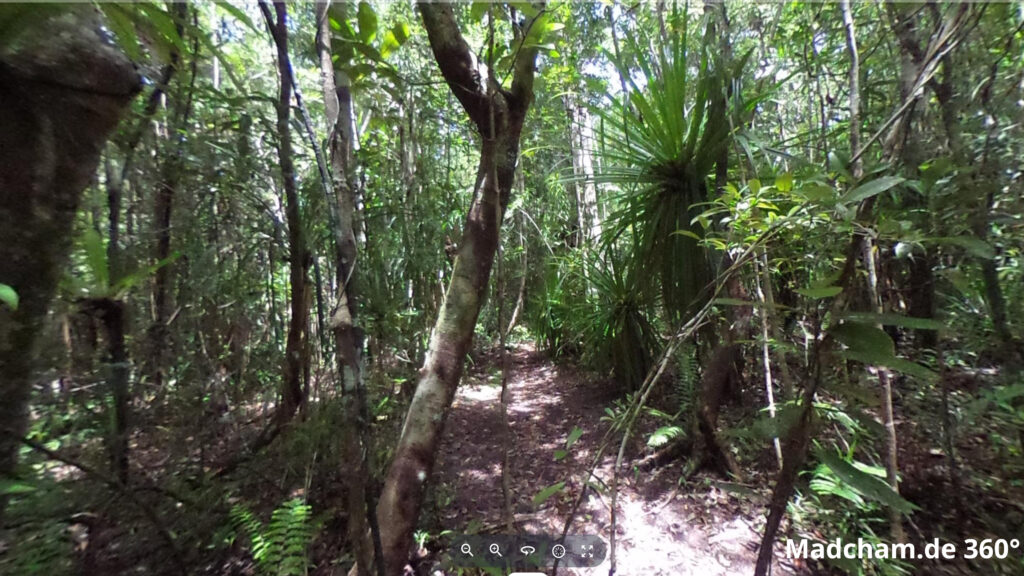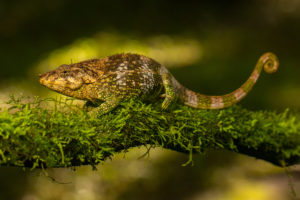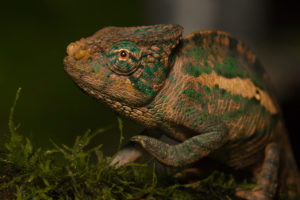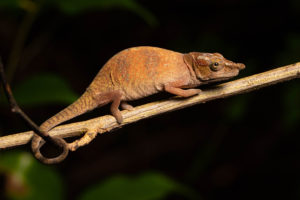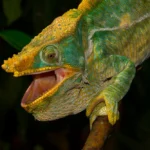no legal export possible
First description:
Gehring, Ratsoavina, Vences and Glaw, 2011 ![]()
Origin of the species name:
Philip-Sebastian Gehring and Miguel Vences from the Technical University of Braunschweig (Germany), Fanomezana M. Ratsoavina from the University of Antananarivo (Madagascar), and Frank Glaw from the Zoological State Collection Munich (Germany) simply named the species after its origin, the forest of Vohibola.
Distribution:
Calumma vohibola lives in the Reserve of the same name on the east coast of Madagascar, about 50 km south of the coastal town of Toamasina (Tamatave). The reserve is quite small with only 23.44 km². Of this, only 8 km² are so-called littoral forest, a particularly rare type of forest that occurs between the sandy beaches of the Indian Ocean just above sea level. The forest extends on a strip of land between the Indian Ocean and along Lake Ampitabe and the Canal des Pangalanes. Due to its low and thus accessible location, the forest area is unfortunately very much threatened by deforestation. Calumma vohibola is not only found in the Vohibola Reserve, but also in neighbouring areas, including the equally small Akanin’ny Nofy Reserve. Isolated finds are also known near Toamasina (Tamatave). Between the two reserves and on the stretch of land up to Toamasina, mainly secondary vegetation is present.
In our experience, the species is very difficult to find and is only active in a few months during the rainy season. We assume that the population of Calumma vohibola is much smaller than that of other chameleon species in the same area.
Appearance and size:
With a total length of eight to nine centimetres, this chameleon species is one of the smallest tree-inhabiting chameleons in Madagascar. Both sexes wear a very low casque and a very short rostral appendage that barely protrudes above the upper lip, which looks more like a snub nose and is sometimes more “bumpy” and “knobbly” on the bridge of the nose than in similarly small Calumma species. Males usually have several larger spiny scales forming a dorsal crest, but these can also be absent.
Calumma vohibola is not entirely consistent in colour. In the dry season and when sleeping, the species is mainly found with quite uniform beige colouration all over the body. Awake, relaxed Calumma vohibola, on the other hand, show a surprising amount of colour. The males have light blue and light green stripes on an almost white background and usually blue spots on the nose. The females show a very interesting stress colouration: many small, light blue and light green scales on a dark brown to brown-red background. They also often show light blue spots on the head area when excited. Both sexes have larger scales on the arms, legs, hands and feet than on the body. Almost all individuals show a dark eyelid line.
| Jan | Feb | Mar | Apr | May | Jun | Jul | Aug | Sep | Oct | Nov | Dec | |
| Average temperature | 26 | 26 | 26 | 25 | 24 | 22 | 21 | 21 | 22 | 23 | 25 | 26 |
| Minimum temperature | 22 | 23 | 21 | 19 | 17 | 17 | 17 | 17 | 18 | 19 | 21 | 22 |
| Maximum temperature | 30 | 30 | 30 | 29 | 28 | 26 | 25 | 27 | 26 | 27 | 29 | 30 |
| Rain days | 20 | 19 | 20 | 15 | 14 | 13 | 16 | 15 | 13 | 13 | 15 | 19 |
We have collected the data given above over several years with thermometers and hygrometers at the finding places of the chameleons. "Average temperature" means that values of a whole month have been calculated to one average value per month. For example all measured minimum temperature values of February have been calculated to one average minimum temperature for February. In plain language, this means single peak values of a day may be a little higher or lower than the average minimum and maximum temperatures. It is possible that a location has an average maximum temperature of 29°C, but one day during that month it had 33°C or even 35°C there.
Two examples of a daily course of temperatures in the rainy season can be found below. Both were recorded with data loggers in 2023.
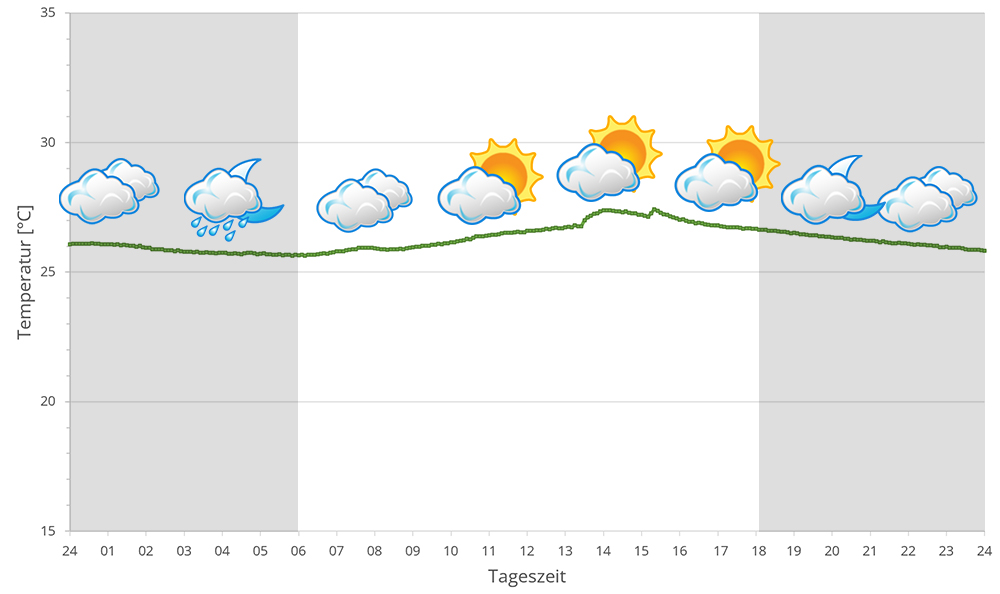
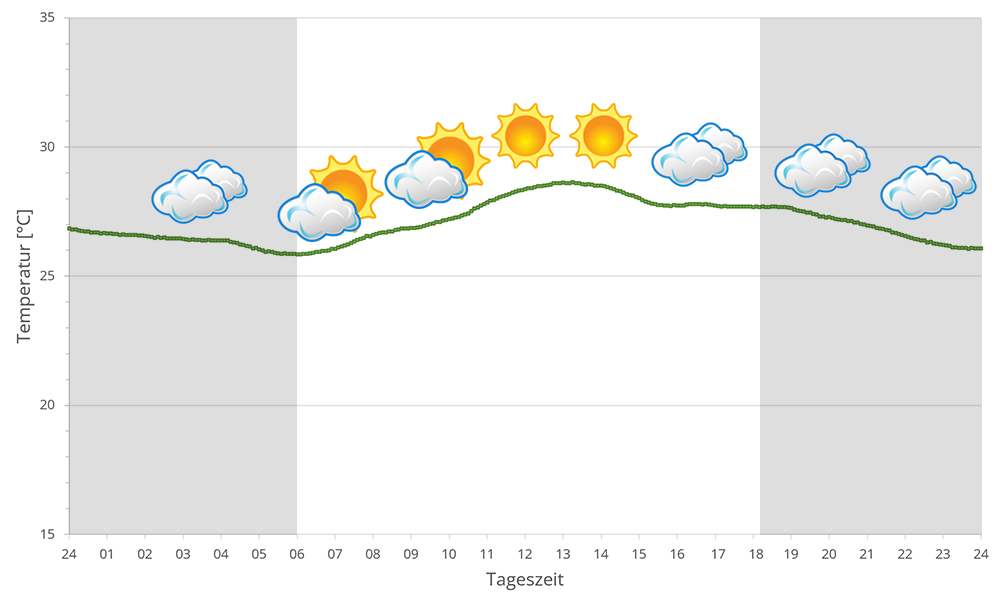
The climate at Lake Ampitabe and in Manambato is warm all year round, and the nearby Indian Ocean usually brings a light breeze. This makes it a popular place for travelers to relax - it never gets cold here. During the day temperatures can easily exceed 30°C, in the dry season from April to October they are slightly lower.
At night the temperatures cool down a bit. But the night temperature never goes far below 20°C. During the whole year, there is a moderate amount of rainfall, so that the rain forest remains continuously green. In 2023 we used data loggers to measure relative humidity on different days around Lake Ampitabe during the rainy season, the data can be found below.
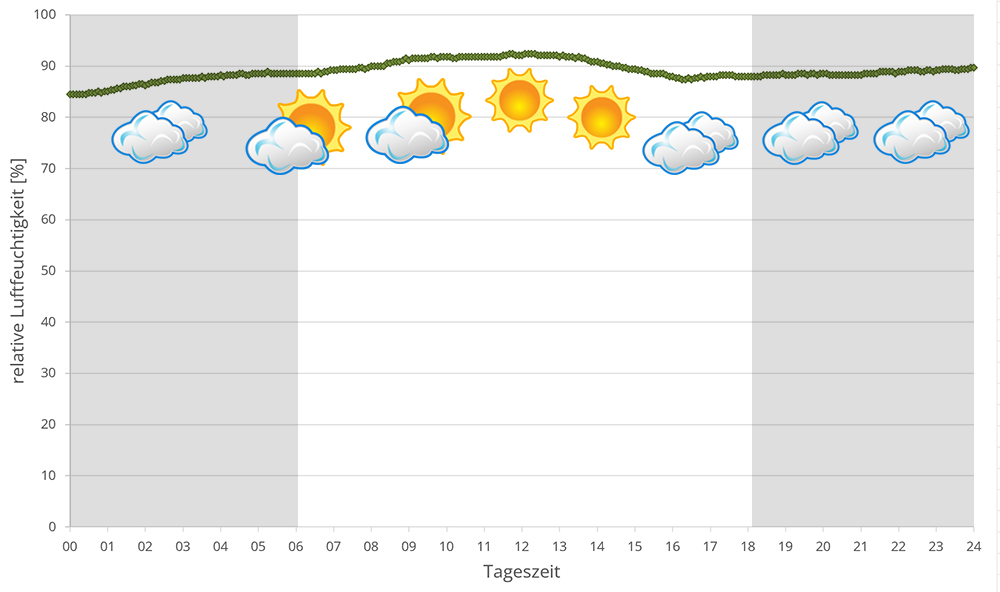
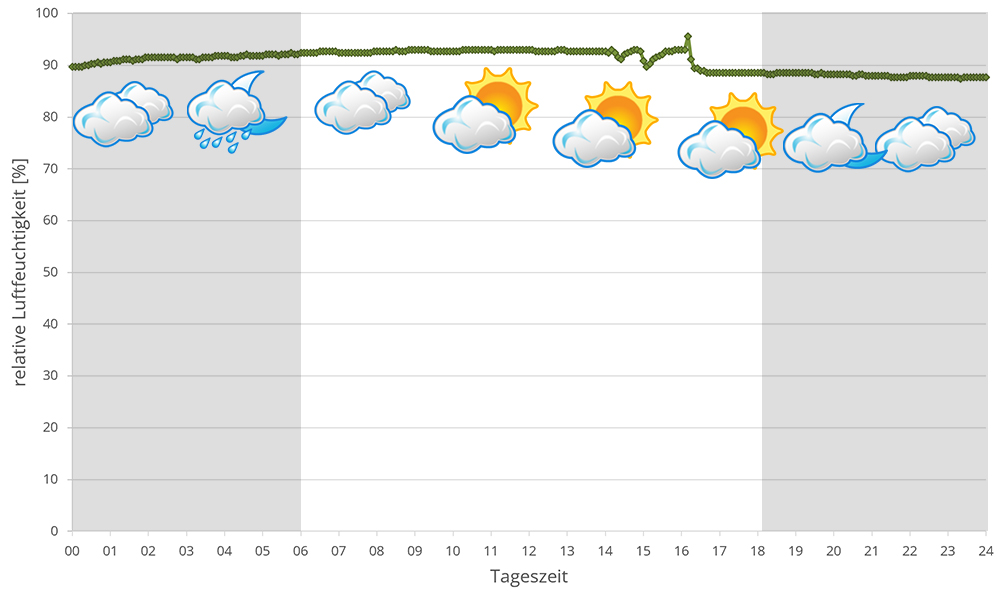
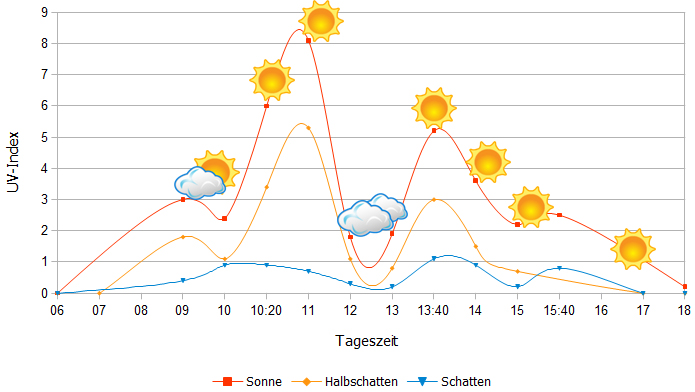 Tageszeit = day time, Sonne = sun, Halbschatten = half shade, Schatten = shade
Tageszeit = day time, Sonne = sun, Halbschatten = half shade, Schatten = shade
We have measured UVB data with a Solarmeter 6.5 in spring (beginning of April) at the peak of activity of chameleons in Madagascar. We always measured the values that a chameleon could maximally reach in its habitat.
In 2023, in addition to other climate data, we also measured the air pressure at the locations we visited in Madagascar. The following data is from different days during the rainy season around Lake Ampitabe. On the X-axis is the time of day or night. In Madagascar, the day begins around 6 am, and night falls at 6 pm. The Y axis shows the atmospheric pressure in hPa.
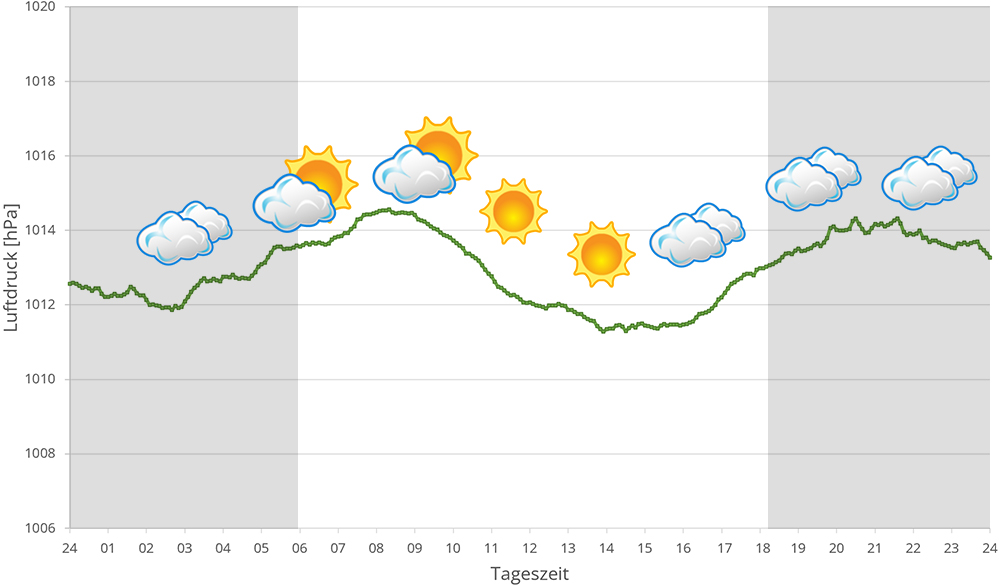
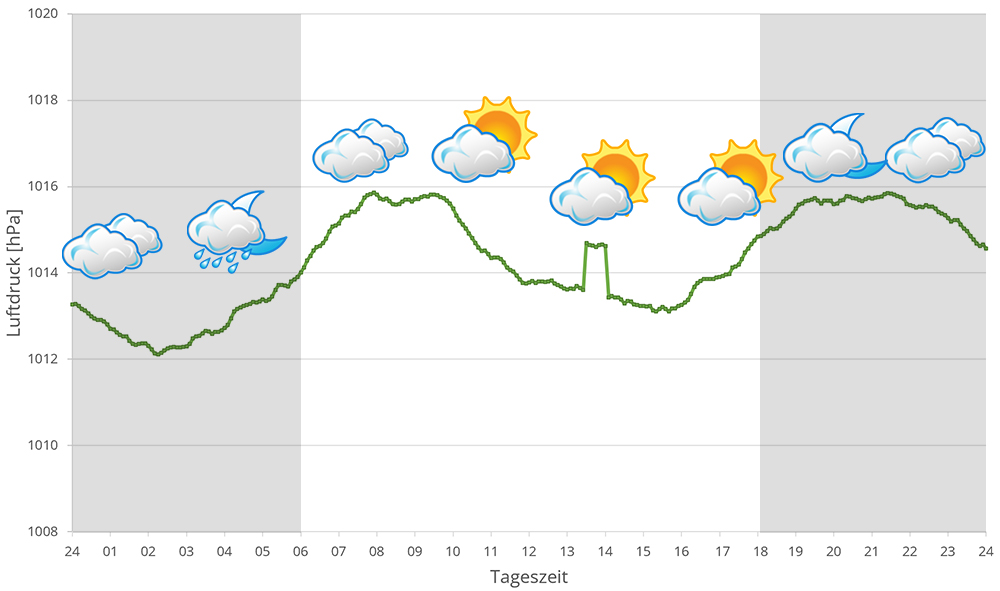
Habitat:
The following photos show parts of the habitat of Calumma vohibola in the Akanin’ny Nofy and Vohibola reserves. Some are taken directly from sites where the species was found. The lowland rainforest here is very humid and consists mainly of relatively young, narrow trees. There are many epiphytes. The soil is a mixture of soil and fine sand. Calumma vohibola mainly prefers very dense, fine-textured scrub that is difficult to see and offers endless hiding places.
Below you will find some 360° images from Akanin’ny Nofy that we took during the rainy season. If you click on the respective image, the pictures will open in an enlarged view in a separate window. You can use the mouse to rotate in all directions. You also have the option of running the images in full-screen mode. Have fun looking at them!

